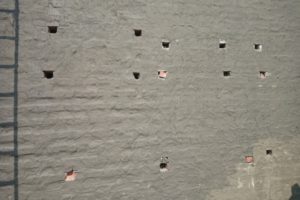One of the most problematic areas in a home is the basement. Basements are prone to water leaks and moisture buildup, which can result in the dreaded basement flooding that all homeowners wish to avoid. A leaky, damp, or wet basement can also lead to more severe problems like an unstable foundation, mold, or insect infestation.
Needless to say, it’s better to avoid these issues before they ever have a chance to develop. One of the most effective means of preventing water damage to your basement is through basement waterproofing. Professional basement waterproofing contractors determine the cause of the leak, clean the area, and waterproof it to ensure that it stays dry at all times.
When it comes to basements, there is no single fix-all solution – the basement waterproofing method needs to depend on the type and severity of the damage. The source of the water damage, whether external or internal, also plays a major role in determining the type of waterproofing method to use.
basic basement waterproofing methods:
Interior sealants. Although interior sealants are not often used as a basement waterproofing tool, they can be used as a temporary material for keeping your basement dry. This tool is designed to ensure that the atmospheric humidity level in the basement stays low. Using interior sealants to waterproof your basement prevents moisture from being absorbed by the basement walls and floors, and can also help prevent moisture from spilling to other parts of the house.

Interior water drainage. The most effective basement waterproofing method is called interior water drainage. A drainage system can help avoid water buildup in your basement, moving the water from the footers of the house foundation and out below the basement floor. Interior drainage systems can be installed in just a day or two, and are much more affordable than outside basement waterproofing systems.
Exterior basement waterproofing. Exterior basement waterproofing is a costly and extensive method used by contractors to waterproof basements, usually at the time of construction. This method is designed to prevent water from causing any major structural damage to your house or building, using polymers and membranes to coat the exterior basement walls. Polymers are known to be an efficient waterproofing material that can stand the test of time. Unfortunately, using this method on an existing home can be disruptive and may even clog exterior drains, limiting its effectiveness.
